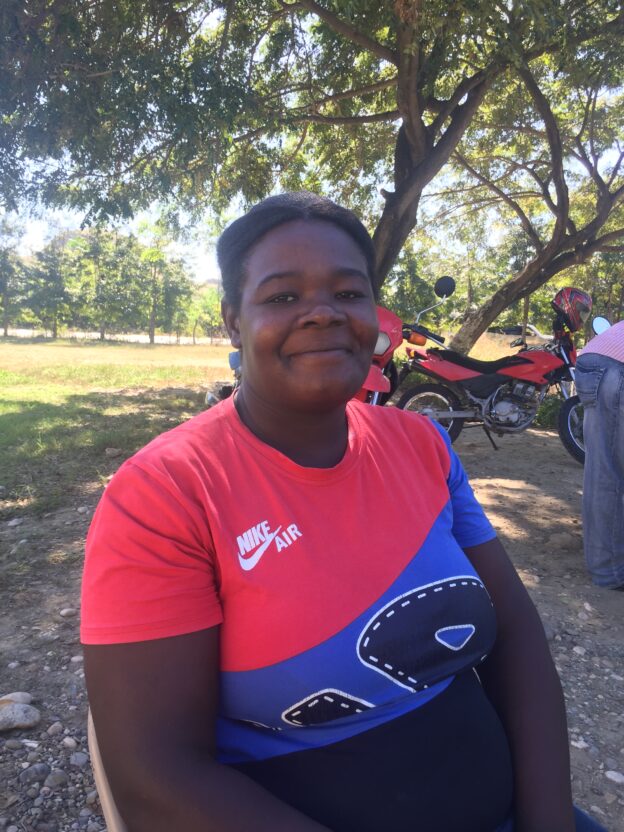Evna lives in Sèka, a small community within Tomond, just northeast of the intersection on the national road that leads to Kas. She and her partner struggle to support their two children. He takes jobs as a day-laborer in other people’s gardens and works a field for the family as a sharecropper, paying half of his harvest to the land’s owner. Evna herself does laundry for a family that pays her 750 gourds per months. That’s less than $10. “When you have nothing, you have to do what they offer you,” she explains.
When she joined the program, she chose two goats and a pig as her two enterprises, but when she realized how expensive it would be to raise the pig, she asked her case manager Josiane to buy her a third goat instead.
In the program’s earlier years, Josiane would not have had the flexibility to make that change. Its rules used to require that members take two different types of assets. It seemed like a good way to protect them against total loss. If one of their economic activities failed, they would still have another. But though successful management of multiple types of assets remains one of the criteria for graduating from the program, members no longer have to take more than one type of asset at the start.
In fact, Evna hasn’t been able to make much out of her three goats so far. One was pregnant when she first received it, but miscarried. This is not unusual because transporting goats from the markets where we buy them to our members’ homes can be a rough experience for them. Two of them are now pregnant, but Evna plans to sell the other. At her CLM training, she learned that there is no point in raising a nanny-goat that doesn’t produce young. So her three goats are still just three goats.
But she has been making progress in another way. During her first months in the program, she was part of a sòl, a form of savings club common in Haiti, with some of her fellow CLM members. Each week, they would contribute a portion of the stipend they received for the program’s first 24 weeks, and one of them would take the whole pot. Josiane managed the process, and used it to work with the members on the habit of planning. Each time a member’s turn was approaching, she and Josiane would discuss how she would use the money. When Evna’s turn came, she took the 1250 gourds — about $13.50 — and used 1050 gourds to buy a female turkey. She now has six turkeys, worth more than 6000 gourds in all.
She still does laundry. She says the extra cash helps her keep her children fed. And it also helps her buy shares at the weekly meeting of her savings and loan association. Each week, she contributes 100 – 250 gourds. She can ask the association for a loan if she needs one, but she’s not planning to right now.
She wants to wait until the year-long cycle ends. At that time, she’ll receive her year’s worth of deposits along with whatever interest the group earns on the loans they make. She’s hoping that she’ll have enough to buy a cow, even if she has to buy one nan vant, or unborn. She’ll sell some of her livestock to add to the money she gets from the association if she needs to. Like many CLM members, her interest in a cow is straightforward. “A cow can have a calf or two and eventually you can sell them to buy land.”
